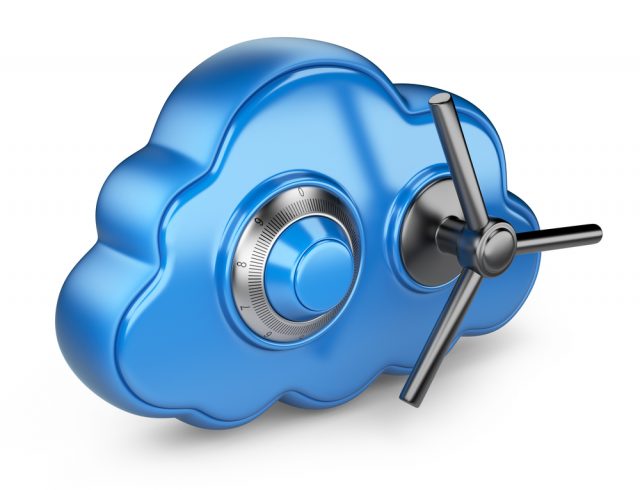How does security posture management guard cloud environments?

Cloud technology has been gaining momentum in the last couple of years.
It threw a lifeline to companies by making remote work at the start of the crisis possible, enabled scaling for a reduced cost, and made information that much more accessible. However, all of these benefits also come with security risks for organizations that haven’t adequately protected their new infrastructure.
To avoid cybersecurity incidents such as data breaches, companies add tools that reaffirm their security 24/7. One of those tools is Security Posture Management.
Before diving into how businesses can avoid threats with Security Posture Management, we must first understand: what are common cloud environment cybersecurity risks, and what are the challenges of protecting the cloud?
Common Cloud Environment Cybersecurity Risks
According to Statista, common public cloud security issues include:
- Misconfiguration of the cloud
- Insecure interface (or API)
- A leak of sensitive information
- Unauthorized access
- Account (or complete service) takeover
Those are the top five security concerns for organizations that have adopted a cloud to their infrastructure.
Other threats include Distributed Denial of Service (DDoS), ransomware, lost mobile devices, and other unidentified risks.
How do the most common security problems compromise the cloud?
Cloud Misconfigurations
Cloud misconfiguration accounts for 60 percent of the security risks in the cloud. Errors in the way the cloud is configured (AKA cloud misconfigurations) occur in the phase of the adoption, and they can form flaws that allow cyber criminals into the system.
Mistakes happen because teams might lack knowledge of the proper configuration, but also because most companies use cloud services from multiple vendors that require versatile settings.
Insecure Interface
Application Programming Interface (also known as API) links the app of the organization and data to the cloud.
Cybercriminals target this flaw to obtain access to private information they can either leak, sell, or demand ransom.
Compromised Data
Cloud technology is used to store a lot of data that concerns the users, but also the company itself.
Data breaches are often the result of human mistakes such as stolen or guessed credentials, incorrectly set permission, or mistakes in storing information.
Unauthorized Access
Cybercriminals gaining access to user accounts can allow the hackers access to the complete system or result in further criminal activity such as data leaks.
In most cases, well-known vulnerabilities such as unpatched software are the main culprits that allow that kind of criminal activity.
Account Takeovers
The most common result of unauthorized access, the takeover of an account (or complete service) allows the hacker control over the breached account.
To prevent a complete takeover, it’s necessary to limit access based on the role of each specific employee. If the hackers get into the system via one account, they shouldn't be allowed to the entire infrastructure.
Challenges of Protecting the Cloud
What makes securing cloud environments from cybercriminals so difficult?
Some factors include:
- Increased complexity of the cloud infrastructures
- Constant changes within the system
- New types of attacks
Nowadays, businesses have more than one cloud structure within their entire architecture. What’s more, to get the most value, they adapt various cloud services within a single infrastructure.
Multi-cloud infrastructures that combine more than one public cloud form a complex architecture that is difficult to defend if a company doesn't have an overview of it.
The dynamic nature of the cloud can present an issue. With every employee login and update, it can result in a gap in security that puts the company at risk from some of the top five most common cybersecurity concerns for the public cloud.
Hackers have been getting more sophisticated, but also increased the overall number of attacks directed towards companies.
They perceive the introduction of the cloud environment as a lucrative opportunity as well. Ever since more businesses employed the cloud, cybercriminals have been using well-known attacks such as DDoS but have also exploited vulnerabilities in a way that hasn’t been seen before.
Automated Threat Discovery With Security Posture Management
The AI-based solution that is designed as an answer to the issues in cloud security mentioned above is Security Posture Management. It automatically monitors, identifies, alerts, and remediates risks.
The tool is used to continually verify whether the complete infrastructure and all the tools and devices are safe from possible hacking -- this includes the cloud.
For the cloud environments, it can detect misconfigurations and unauthorized access early -- before it causes incidents such as data breaches.
To remain up-to-date with the latest attacks that compromised other businesses and public clouds, the tool relies on the MITRE ATT&CK Framework.
As a bonus, Security Posture Management is a solution that cuts costs companies have to invest in the IT teams even further.
Namely, it automates the discovery of threats, but also ranks the possible flaws and separated high and low-risk issues in the generated report that is continually updating itself on the dashboard.
This aids teams who manage security, all the while reducing the need for additional team members.
Final Word
Cloud environments are not going away anytime soon, and companies that use this technology have a greater chance of successfully scaling and taking their services worldwide.
What’s more, cloud computing opens up a wider pool of top talent that wouldn't have been accessible if the employment search were restricted to the company’s geographical location.
Since the start of the pandemic, businesses have taken measures to protect their cloud environments from versatile attacks.
To protect the cloud as well as the privacy of clients and users, it’s necessary to continually invest in security that can keep up with the new ways that threat actors can target organizations.
Security Posture Management utilizes AI to discover signs of new threats and vulnerabilities within the cloud, and it’s a must for businesses that want to be one step ahead of threat actors.
Photo Credit: Bedrin/Shutterstock

Peter Davidson works as a senior business associate helping brands and start ups to make efficient business decisions and plan proper business strategies. He is a big gadget freak who loves to share his views on latest technologies and applications.
